It is one of the most familiar incidents in American history, and also one of the least understood in many ways
-
Special Issue - George Washington Prize 2018
Volume63Issue2
A little after 9:00 p.m. on March 5, 1770, a detachment of British soldiers fired into a crowd of townspeople on King Street in Boston, in the Massachusetts Bay Colony. The result—the “Boston Massacre”—has echoed through the pages of newspapers, pamphlets, and history books ever since. It is perhaps the most densely described incident in early American history (with more than two hundred eyewitness accounts), yet the descriptions are sufficiently contradictory to make the unfolding sequence of events surprisingly hard to pin down. To say what happened would seem to be a straightforward task, but in many ways the Boston Massacre remains an irreducible mystery.
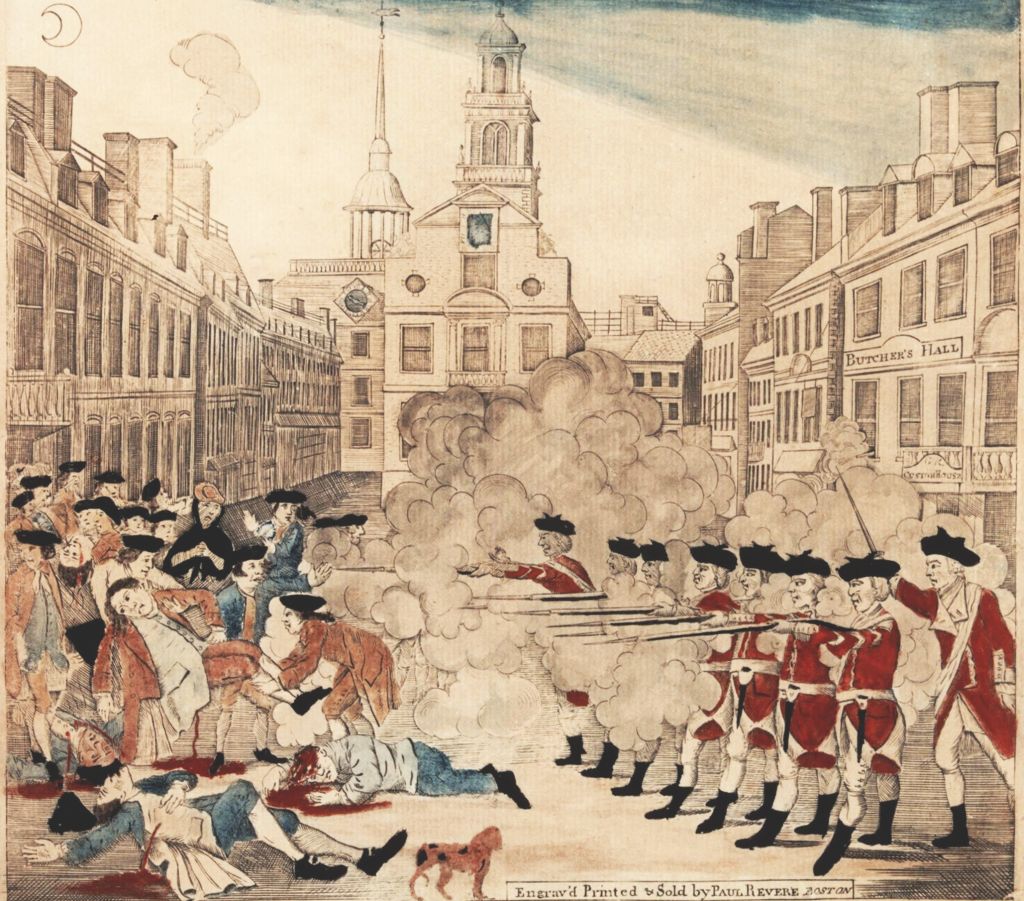
The human mind does not simply recall everything it sees, recording an objective and unerring account of events as they happen. Instead, in moments of stress, it picks up patches of highly subjective impressions. Only through narrative—only by subsequently devising a story that threads those patches together into a meaningful pattern—do the instantaneous effects of a dramatic episode like the shootings in King Street acquire a form that can be recalled, interpreted, and argued for. The Boston Massacre offers an unusual opportunity to observe impressionistic flashes gradually take on the shape of competing narratives, and then to trace the evolution of those narratives across a long span of time.
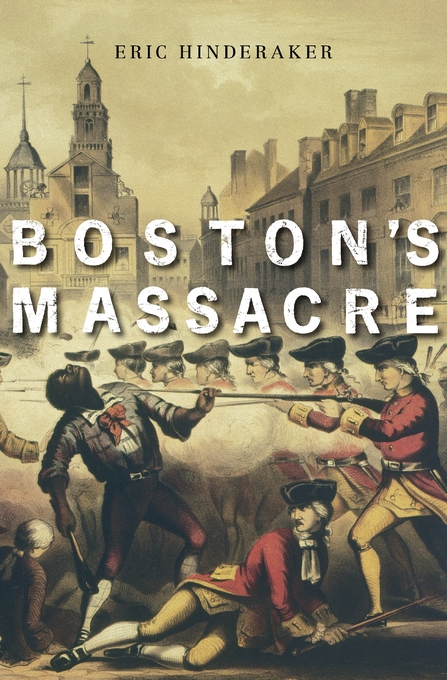
In the abundant literature on historical memory, most of the attention has been given to momentous events. One large body of work in memory studies relates to the place of catastrophe—especially the Nazi Holocaust—in the historical experience of Jews. In U.S. history, memory studies have paid close attention to the ways in which the Civil War is remembered, especially among southerners.’ The Boston Massacre is very different from the Holocaust and the Civil War. In a critical way, it is precisely their opposite: while those later occurrences were so monumental in scale and implication that it was difficult to assimilate their meanings, the Boston Massacre was, by comparison, an inconsequential skirmish. Similar scrapes occur often, and are just as quickly forgotten. But the shootings in King Street were not forgotten. They were amplified and politicized in ways that made the Boston Massacre seem to be an event of transcendent importance. This use of historical memory differs dramatically from the cases that dominate the literature on the subject, and it deserves careful and extended consideration..
Simply to call the Boston shootings a “massacre” was to make a claim for the event’s significance. Townspeople immediately referred to the shootings as the ‘bloody massacre” in King Street; within weeks, that phrase had repeatedly cropped up in print. Though it is inflammatory, the term “massacre” is also vague. According to the Oxford English Dictionary, its primary definition in the eighteenth century was “the indiscriminate and brutal slaughter of people or (less commonly) animals; carnage, butchery, slaughter in numbers; an instance of this.” In modern usage, a massacre seems to require a high body count. But in the early modern sense of the word, the “cruel and atrocious murder of a single individual” could constitute a massacre. It was identifiable by the spirit in which it was undertaken, its wantonness and brutality. To invoke the term was to make a rhetorical claim with political significance: this shooting was no “unhappy disturbance,” as the soldiers’ apologists wanted to argue. It was intentional and cold-blooded, and the soldiers could not be excused for their actions. The Boston Massacre is a phrase that contains within itself a judgment, an indictment, a conviction.
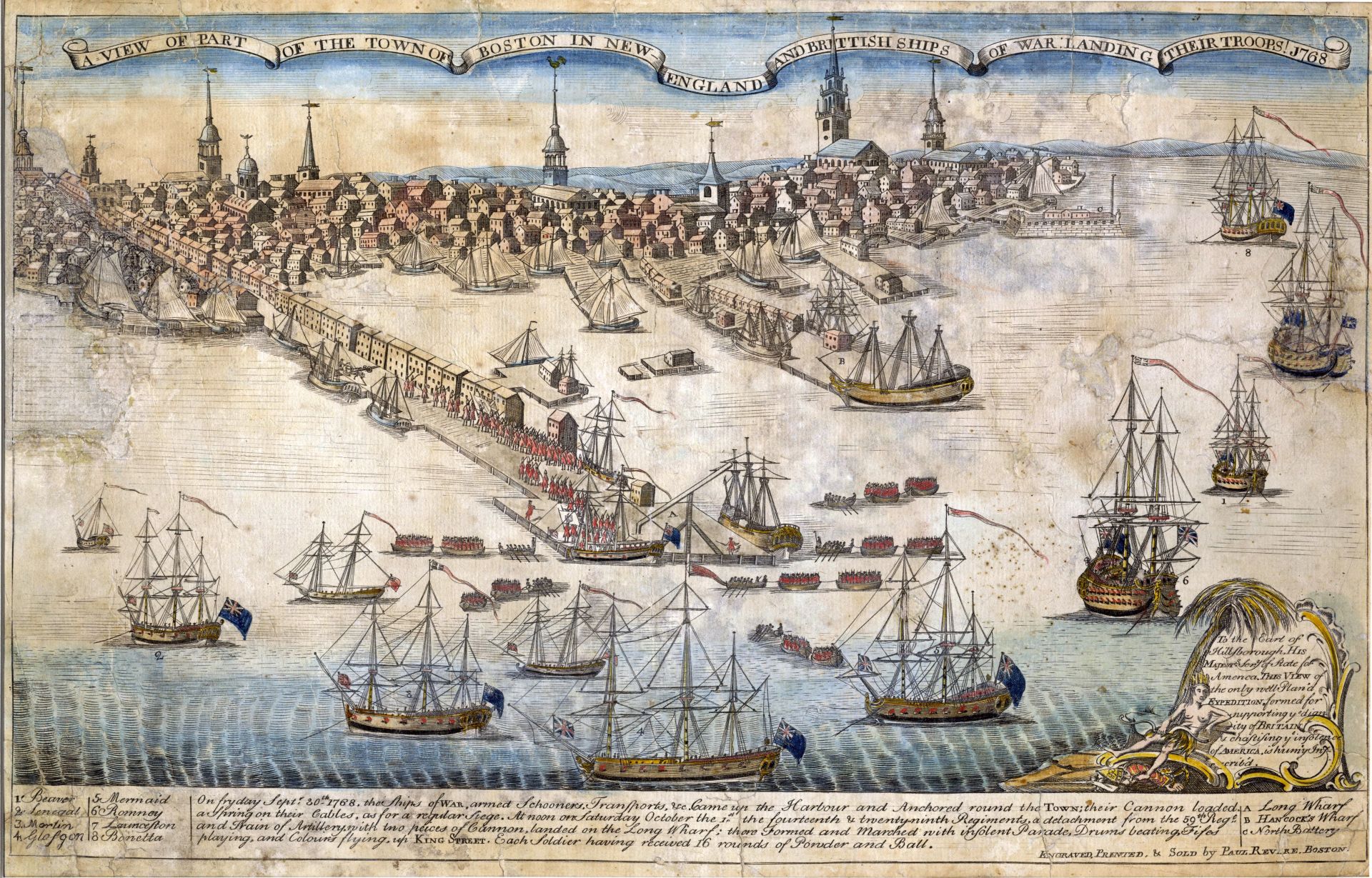
Boston was the crucible of the American Revolution. It was not the only place that mattered in the era of independence, but it was the place where all the elements of the familiar story came together. Thirteen (or perhaps more) of Britain’s North American colonies would surely have attained their independence without the crises in Boston; in all likelihood, they would have had to fight a war to win it; and it is possible that they would have called that war a revolution. But even if all these things came to be, without Boston every aspect of the American Revolution—the time line, the events, the unfolding narrative of conflict and war—would be so different as to be unrecognizable to us. Without Boston, there would have been no destruction of the East India Company tea; no Coercive Acts; no Lexington and Concord; no Continental Army forming on the Cambridge Common. There would have been no First Continental Congress, no John or Abigail or Samuel Adams, no Paul Revere, Joseph Warren, or Mercy Otis Warren.
If Boston was the crucible of the Revolution, its military occupation beginning in the fall of 1768 was the catalyst with the power to transform all the other elements taking shape there into something uniquely volatile and malleable. And the events of March 5, 1770—the Boston Massacre—applied the heat necessary to energize that catalyst and transform local conditions into something new: mutable, protean, unpredictable. If it were not for the shootings in Boston, 1770 might have been a year of reconciliation between Britain’s Parliament and its North American colonies. The signs were favorable. But events in Boston ensured that 1770 would not be remembered that way. The Boston Massacre decisively shifted the direction of relations between Britain and its North American colonies. It was the sine qua non of the American Revolution as we know it.
A PORT TOWN sited on a peninsula that was almost an island, Boston had connections to the British Atlantic that were indispensable. But both the community of Boston and the British Empire evolved dramatically during the first three-quarters of the eighteenth century, in ways that endangered their relationship. Boston’s population ceased to grow after 1740 (a unique circumstance among the port towns of British North America), a fact that profoundly colored its community dynamics and political culture. It developed a complex, prickly relationship with Great Britain, which was itself undergoing dramatic change in the eighteenth century. A relatively weak and isolated island kingdom wracked by civil war and revolution through much of the seventeenth century, Britain emerged in the eighteenth century as a rising European power. Characterized by an increasingly efficient fiscal-military state, with a powerful navy, a growing army, and a political culture that galvanized the nation around a muscular defense of imperial interests, Great Britain entered into a series of European wars that spilled more and more into the Atlantic and onto American shores as the eighteenth century progressed.
In this process of militarization, the town of Boston and the colony of Massachusetts Bay had been enthusiastic partners. With deeply rooted militia traditions and a strong, assertive sense of Protestant English identity, New Englanders were especially well prepared to join in the task of fighting Catholic New France. Massachusetts Bay soldiers participated in the military campaigns of the eighteenth century in large numbers, while its merchants supplied the provisions and ships that carried the effort forward. Britain’s victory in the Seven Years’ War validated New Englanders’ confidence in the righteousness of their cause and the efficacy of their institutions. The superiority of their locally controlled militias and their representative assemblies had been proven against the centralized, authoritarian practices of the Catholic French.
But as Great Britain evolved into a more efficient war-making state, it had become a more centralized and authoritarian power as well. In the seventeenth century, it was an article of faith in England that a standing army in peacetime was a dire threat to freedom, and this presumption remained strongly in force in British North America—and especially in New England, where the republican ideals of the seventeenth century underlay every aspect of law and government. In Great Britain, the Glorious Revolution of 1688 marked the beginning of a long era of sustained European warfare and growing imperial commitments. Those wars overturned earlier assumptions about the place of armed force in public life. A peacetime standing army became indispensable to the crown and Parliament. But many fundamental questions about the army’s relationship to both civilian populations and subordinate institutions of government remained unanswered.
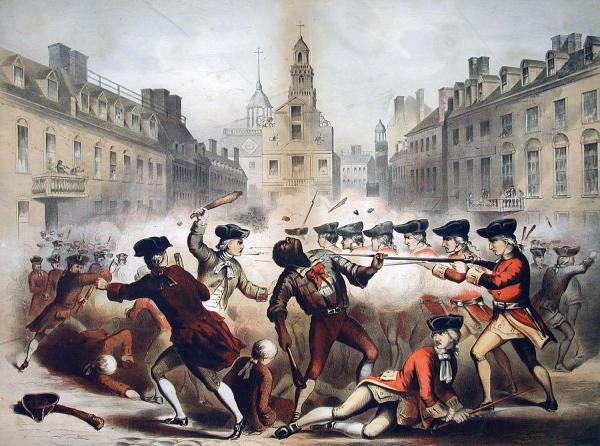
When Parliament decided to station a large body of troops in North America following the Seven Years’ War, and political and military leaders subsequently chose to dispatch four regiments to Boston as a peacekeeping force, they were marching onto an unmapped landscape. The shootings in King Street that came to be called a massacre were one result. But they occurred only after seventeen long months of military occupation: a period marked by confusion, outrage, and endemic conflict. The clash between local and imperial authorities derived from Bostonians’ deep attachment to older republican principles, which were incompatible with the eighteenth-century rules under which British officials sought to manage imperial relations?
If Boston was especially sensitive to these changes, it was also especially well equipped to resist them. Its town meeting form of government gave local politics a distinctly popular cast, while several decades of economic stagnation helped to shape a local political apparatus that was adept in expressing supplication, grievance, and resistance. During the 1760s a network of local associations developed to mobilize public opinion and, on occasion, orchestrate crowd actions. British authorities came to see Boston as their most intransigent North American community, while Bostonians, more than the residents of any other colonial settlement, resisted compromise and interpreted their conflict with Great Britain as a matter of fundamental principle.
In considering the massacre, we discern three themes. First, how did military and civilian officials of the British Empire negotiate their authority with leaders of Boston —that unusually independent and uniquely unified colonial town? Though the power of British officials was theoretically expansive, in practice it was limited by custom, legal precedent, and practical considerations; as a result, it was exercised in convoluted and ambivalent ways that did more to confuse than to clarify the relationship between crown and town. Second, how did Boston’s leaders achieve their unusual level of independence from crown authority and forge the unified front that the town presented to British officials? And third, how is a chaotic event like the Boston Massacre assimilated into historical memory? What were its legacies, and how have its meanings been politicized in the months, years, decades, and centuries since it occurred?
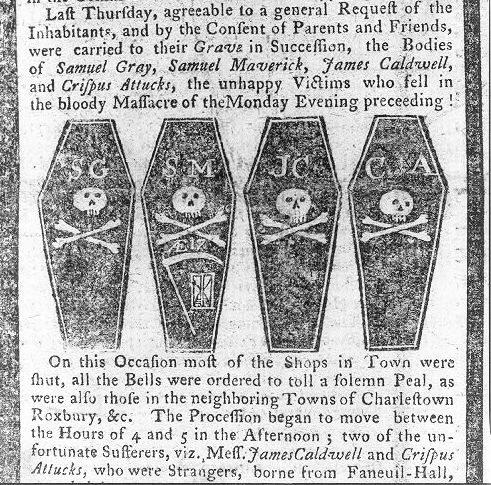
Event, Narrative, Memory: it is a sequence that can be generalized into a three-stage interpretation of the way historical consciousness evolves. It begins in confusion, when the basic facts of an occurrence are unclear and participants are trying to make sense of what has happened. It proceeds to a period of contestation, when competing interests construct alternate narratives, each highlighting some aspects of the event while suppressing others. In this period, the narratives evolve as observers try out various formulations of their views, but they gradually develop into coherent and self-sufficient explanations and interpretations.
The contest between competing accounts of an event can have a long life, but it cannot last forever. Eventually, the particular issues that energized competing interpretations fade, the contest’s heat diminishes, and the inheritors of an occurrence like the Boston Massacre lose a fine-grained sense of what was at stake in the original controversy. They are left with a dim, residual memory that can lie fallow for decades, serving as a vaguely recalled icon of American experience but divorced from its original contexts and uncontroversial in its meanings.
But new contexts can bring new meanings to the fore. Initially, memories of the Boston Massacre provided a vital spark of outrage in the growing conflict with Great Britain. But at the end of the American Revolution, the usefulness of that function faded. Recollections grew more ambivalent, and the event fell into disfavor in public memory. When memories of the Boston Massacre were revived in the nineteenth century, they came with a surprising new twist: Crispus Attucks, one of the men killed in King Street, was recast as the most important figure in the shootings. A sailor of mixed African American and Wampanoag ancestry, Attucks was taken up by Boston’s African American community in the decades before the Civil War as the first martyr in the struggle for American liberty. This rhetorical move triggered a decades-long dispute in Boston about whether Attucks and the other victims were lawless rioters or a patriot vanguard. Eventually that conflict was settled and the Boston Massacre resolved, once again, into a vague and uncontroversial memory.
In more recent times, the Boston Massacre has been invoked for political purposes when the firepower of the U.S. government has been directed against its citizens. It happened during the Vietnam War; more recently, it has framed discussions of the militarization of policing in the twenty-first century. And as race has become increasingly salient to those discussions, Crispus Attucks has again been invoked, this time as a new kind of symbol of African American citizenship. Identified in the nineteenth century as the first martyr of American independence, in the twenty-first century he has become the first African American victim of unrestrained police brutality.
With the passage of 250 years, the Boston Massacre occupies a timeworn niche in the American memory palace. It is a half-forgotten event in a shared patriotic past. But competing interpretations can still be re-energized. Controversies long laid to rest, smoothed under a blanket of warm reminiscence, can suddenly rise from their slumber with surprising force. It is worth recalling the contexts that made the Boston Massacre a unique and powerful occurrence. In a shocking, dramatic episode that unfolded in less than an hour, the shootings in King Street shone a bright light on the landscape of late eighteenth-century British North America like few occasions before or after.
Copyright © 2017 by Eric Hinderaker. Reprinted by permission from Harvard University Press.

